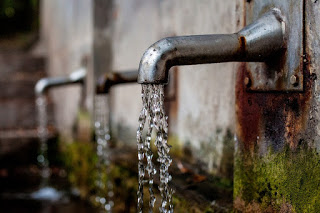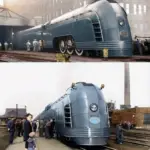New conservation technology, repairing crumbling infrastructure, legislation to lower the amount of water used for high demand activities like irrigation, are all being pushed to reduce demand. While regional imports, better treatment of wastewater, and coastal desalination are being employed to increase supply. All these have their advantages and disadvantages, but all have a possible part to play in ensuring that world water needs continue to be met.
Conservation Efforts
The most obvious way to save water is to use less of it, but it’s not always that simple. A huge amount of water is wasted in the US every year. For example, the city of Daytona Beach, FL, estimates that a tap leaking ten drips per minute wastes an incredible 526 gallons of water per year – and that’s just one tap. Toilet design in the US compared with Europe is also an issue; in Europe, low-flush toilets use an average of 0.8 gallons per flush, while in the US, a low-flush toilet might use 1.3 gallons. These differences obviously mount up over time, and there is little incentive for everyone in the US to go out and buy a low-flush European toilet.
Bans on watering lawns are also an option, although people are resentful of being told to ration their water. In California, governor Jerry Brown signed a $687 million relief package during the recent drought to promote storm water recapturing, expanding the use of recycled water, and better management of groundwater storage.
Fixing Leaks
Water conservation efforts also have to focus on infrastructure if they are going to be successful. There are many products on the market that are able to assist governments and businesses with monitoring their water supply infrastructure. In fact, these techniques have been used for a variety of projects including in municipal works, military bases, private water suppliers, power generation, manufacturing, food and beverages, commercial airports, chemical refineries, construction, and educational and corporate campuses. Not only can these technologies help their users save water, they will often make significant cost savings as well.
So what kinds of technologies are we talking about? These days, there are many products available that can help users to deal with problematic water systems. For example, pipeline condition assessment uses acoustic signals to allow engineers to quickly determine the current condition of a segment of pipe, assigning it a grade based on its state of degradation. And with water main leak detection, systems can use acoustic leak-detection technology and wireless connectivity to allow users to monitor their pipelines in real time in large or small diameter water mains of all types, from PVC to cast iron to copper. Replacing pipes before they wear out and catching leaks as soon as they happen can go a long way toward avoiding the wastage of water.
Increasing Supply
One way to increase the water supply comes with a bit of a ‘yuck’ factor: recycling wastewater into drinking water. Wastewater treatment plants are nothing new of course, but recent innovations have made it possible to treat raw sewage much more quickly and inexpensively. For example, billionaire philanthropist and former Microsoft CEO Bill Gates has sponsored a project that does just that, and uses temperatures at 1000 °C to turn waste into drinking water, producing electricity and a small amount of ash in the process. There was even a video of Gates drinking the resulting water; reportedly, it was delicious.
Such systems are meant for third world countries where the biggest obstacle to getting clean water is a lack of expensive infrastructure. That is less of an issue for North America (although the decay of infrastructure is, as noted above, a problem in itself), but it might still be worth considering how an inexpensive piece of equipment might be modified to be of use to Westerners. With the buzz around micro-power generation using solar panels or small wind turbines, having an in-house treatment plant might be the next big thing in water conservation. Of course, as ever, time will tell.




















